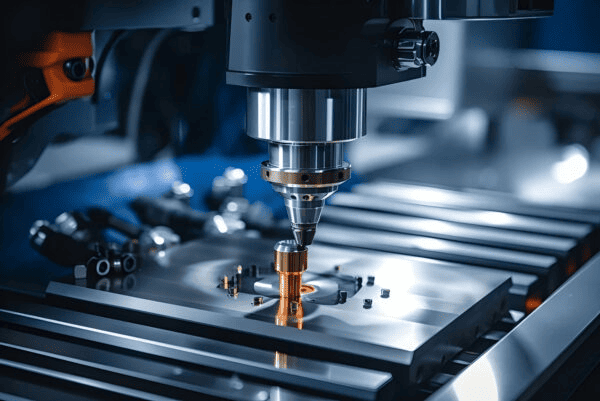In the fast-paced automotive industry, precision and speed define success. As vehicles evolve toward lightweight designs and complex aesthetics, automotive mold fabrication must meet tighter tolerances and faster delivery times. This is where 5 axis CNC machining becomes a game-changer.
Unlike traditional 3-axis systems, a 5 axis CNC machine allows cutting tools to move along five directions simultaneously. This enables manufacturers to produce intricate molds with high precision, minimal setup, and smoother finishes — ideal for car body panels, bumpers, and injection molds.
What Makes 5 Axis CNC Machining Different?
Expanded Motion for Complex Designs
5 axis CNC machining can tilt and rotate the tool or workpiece, allowing multiple sides of a mold to be machined in one setup.
-
Fewer repositionings: Reduces human error and saves time.
-
Higher accuracy: Maintains precision for deep cavities and curved surfaces.
-
Improved surface finish: Eliminates visible marks and polishing time.
This flexibility is crucial in automotive mold fabrication, where every contour affects aerodynamics and visual quality.

How 5 Axis CNC Improves Mold Production Efficiency
1. Reduced Setup Time
Traditional mold machining often requires multiple fixtures and repositioning.
With 5 axis CNC machines, manufacturers can complete complex milling in a single operation. This not only reduces downtime but also shortens delivery schedules for large molds used in dashboards and door panels.
2. Enhanced Precision and Repeatability
Precision is essential when producing molds for injection molding or die casting.
The simultaneous five-axis movement minimizes tool deflection and ensures consistent quality across multiple batches — a key advantage for automotive OEMs and component suppliers seeking zero-defect production.
3. Better Material Utilization
By optimizing tool paths, 5 axis machining reduces waste and allows the use of harder materials like aluminum alloys and tool steel. This improves both durability and lifespan of automotive molds.

Applications in Automotive Mold Fabrication
Injection Molds for Plastic Components
5 axis machining is ideal for creating complex injection molds for bumpers, lighting housings, and interior trims. The enhanced motion control ensures detailed curvature and minimal hand-finishing.
Die Casting Molds for Engine and Transmission Parts
High-strength molds for aluminum or magnesium die casting require dimensional accuracy within microns. 5 axis machines meet this demand with CNC precision manufacturing, ensuring reliable part interchangeability.
Composite and Carbon Fiber Mold Production
For high-end sports cars or electric vehicles, carbon fiber components are in demand. 5 axis CNC systems enable precise trimming and finishing of composite molds, enhancing both aerodynamics and structural strength.
Benefits for Global Manufacturers and B2B Clients
Competitive Advantage for Exporters
International buyers and automotive suppliers look for manufacturing partners who can guarantee accuracy and consistency.
Adopting 5 axis CNC machining demonstrates technological capability and builds trust among foreign trade clients and B2B distributors.
Scalability and Automation
Modern 5 axis systems can integrate with robotic loading arms and smart manufacturing software, allowing unattended overnight production. This reduces labor costs while improving delivery speed for large-volume projects.
Cost Efficiency in the Long Run
Although initial investment is higher, reduced rework, faster turnaround, and better tool utilization make 5 axis CNC machining cost-effective over time — especially for precision automotive mold fabrication.

Key Considerations When Choosing a 5 Axis CNC Machine
-
Machine Size and Axis Range: Match the work envelope to your mold dimensions.
-
Control System: Look for high-speed processing and tool compensation features.
-
Software Compatibility: CAM systems should support full 5 axis toolpath simulation.
-
After-Sales Support: Choose suppliers offering calibration, maintenance, and remote technical assistance.
These factors ensure that your investment in 5 axis CNC technology delivers long-term performance and reliability.
Conclusion
5 axis CNC machining has revolutionized automotive mold fabrication, enabling precision, speed, and versatility that traditional methods can’t match. Whether for exterior panels, lighting molds, or die-casting components, it provides the accuracy needed for modern vehicle design and manufacturing.
For automotive manufacturers, precision machining suppliers, and international buyers, adopting 5 axis CNC technology is not just an upgrade — it’s a strategic move toward smarter, faster, and more competitive production.
FAQs
Q1: What materials can 5 axis CNC machines handle in automotive mold making?
They can machine steel, aluminum, copper, graphite, and even hardened tool steel, providing flexibility for different mold types.
Q2: Is 5 axis CNC machining suitable for small-batch mold production?
Yes. It’s ideal for both prototypes and production molds, thanks to its precision and reduced setup time.
Q3: How can overseas buyers ensure quality when sourcing 5 axis CNC machined molds?
Choose ISO-certified suppliers offering CMM inspection reports and tolerance verification, ensuring consistent quality in global deliveries.


